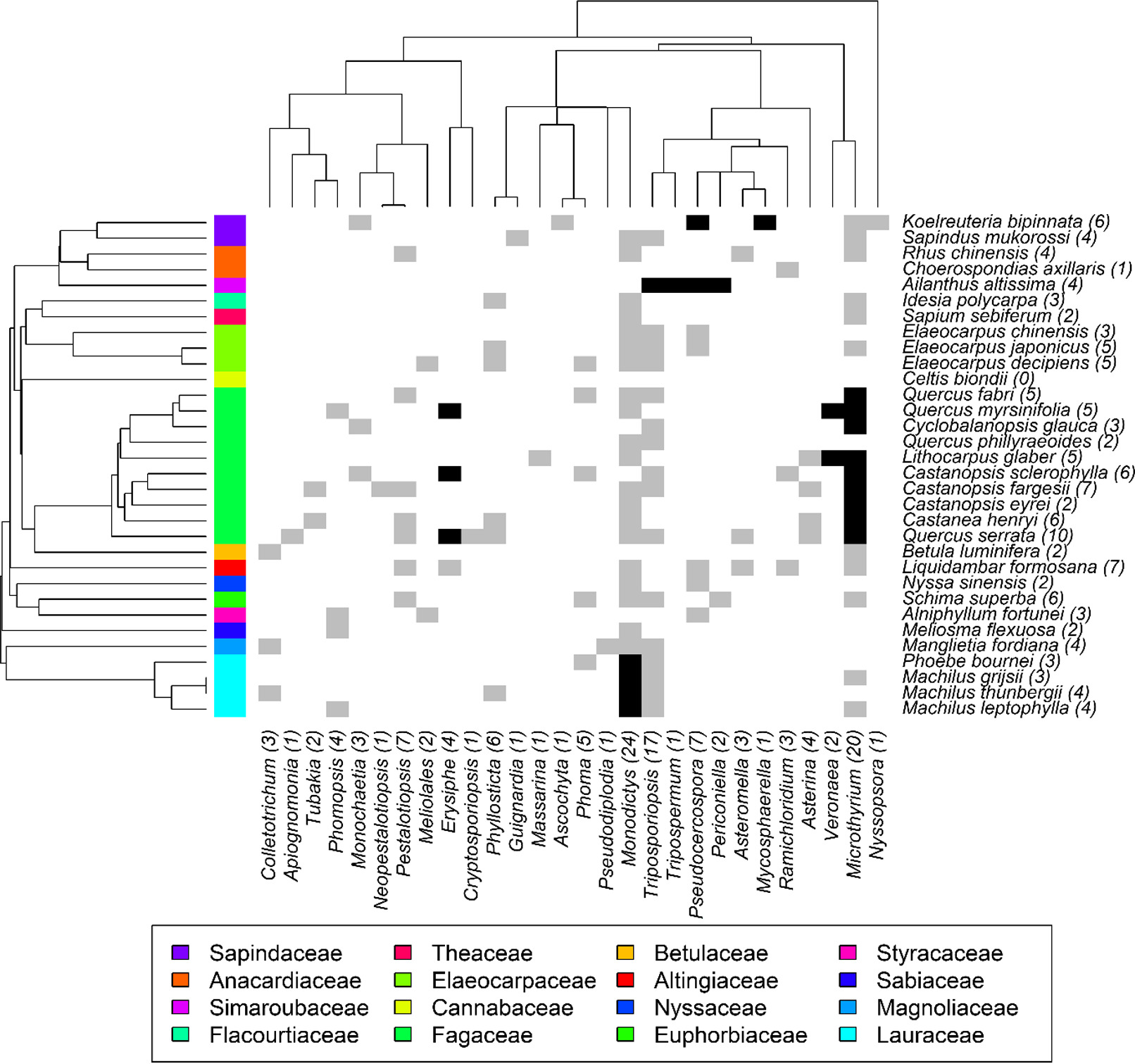Fungal pathogens have the potential to affect plant biogeography and ecosystem processes through their influence on the fitness and functioning of their plant hosts. Simultaneously, changes in plant communities can influence fungal pathogen communities. Exactly which host plant attributes determine the composition of fungal pathogen communities on the leaves remains poorly understood.
Here, we characterized foliar fungal pathogen communities in subtropical tree communities along an experimental diversity gradient in Jiangxi, South‐East China. On 32 tree species, we identified all visible fungal structures and symptoms microscopically and studied fungi‐specific traits such as conidia or spores in detail. We asked how different facets of biodiversity, including taxonomic, phylogenetic and functional tree diversity, shape fungal diversity and fungal infestation at different scales.
We found a positive relationship between tree richness and fungal richness at the plot level. At the level of individual trees of the same species, the relationship between tree species richness and fungal species richness was marginally significantly negative. Importantly, the fungal infestation rates decreased as tree species richness increased, suggesting that colonization of hosts by specialist fungi was impeded by dilution of the pool of available hosts. Moreover, we found evidence for similar topologies between phylogenetic topologies of trees and fungal genera which is a precondition for coevolution and we identified leaf traits, including leaf habit (deciduous/evergreen), leaf magnesium content and stomata size that predicted fungal richness and infestation.
Synthesis. Our study indicates that host tree species harbour different foliar fungal pathogens, which sums up to the highest fungal pathogen richness in more diverse forest stands. At the same time, the foliar fungal pathogen infestation rate for each tree species decreased with increasing tree richness in forests. We identified leaf traits that can help to better predict fungal pathogen richness and infestation, and we show that phylogenetically closely related tree species harbour phylogenetically closely related foliar fungal pathogens. These new insights might be helpful to improve the pest resilience of future forests and plantations.
Literature:
Gemma Rutten*, Lydia Hönig, Rowena Schwaß, Uwe Braun, Mariem Saadani, Andreas Schuldt, Stefan G. Michalski, Helge Bruelheide and Liesje Mommer. 2021. More diverse tree communities promote foliar fungal pathogen diversity, but decrease infestation rates per tree species, in a subtropical biodiversity experiment. Journal of Ecology. 109(5): 2068-2080. https://doi.org/10.1111/1365-2745.13620.

